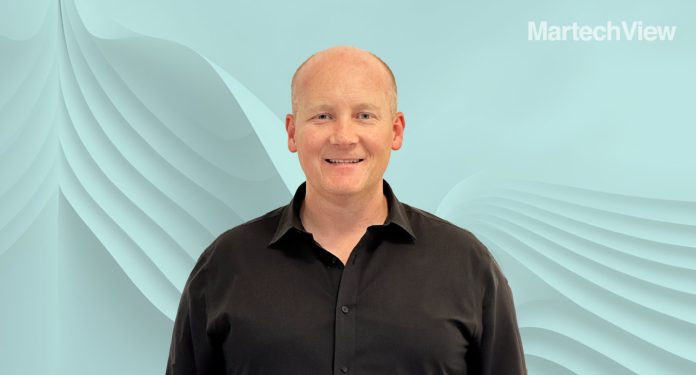Chargebee CMO Guy Marion reveals how to scale a SaaS business with savvy PLG, retention-first strategies, and usage-based pricing. Learn what drives SaaS growth.
What does it take to scale a SaaS business to $150M ARR (Annual Recurring Revenue) while navigating shifting market winds, fragmented data, and ever-evolving customer expectations? For Guy Marion, Chief Marketing Officer at Chargebee, the answer lies in relentless experimentation, smart segmentation, and turning retention into a product strategy—not just a marketing tactic.
In this exclusive interview, Marion unpacks the surprising tactics that unlocked growth during key inflection points, how Chargebee simplified enterprise-grade billing into a self-serve motion, and why the future of SaaS moats will be built not just on product features, but on customer-centric monetization strategies. From launching usage-based trials to pioneering retention-first marketing, he shares what it means to “grind it out” in a world that rewards agility, not shortcuts.
Whether you’re a founder scaling from $10M to $100M or a GTM leader rethinking your PLG playbook, this conversation is packed with field-tested wisdom—and a clear-eyed view of how the subscription economy can do more than just grow revenue. It can help solve global problems.
Full interview;
Scaling to $150M ARR is no small feat. What was the most surprising or unconventional marketing strategy that unlocked growth at a key stage, like $10M or $50M?
I’ve had the privilege of working at a number of generational companies in my career, where I have driven growth at critical moments of scale. In the $10-50M stage, I’ve collaborated with other leaders across the business to specialize the sales and buying journey by customer segment, such as for SMB versus mid-market customers, as well as to develop a “1 to many” sales approach using automation, group demos, and targeting leads based on product usage. I’ve also seen success at this growth stage with opening new use cases and targeting specific verticals, like e-commerce. Additionally, companies often expand into new regions at the $10-50M stage, and I’ve had the privilege of starting with EMEA markets like London, Dublin, and Amsterdam.
How did you simplify complex enterprise features into a self-serve model at Chargebee—especially around pricing and feature gating—for product-led growth?
We have broken down the challenge of self-implementation into a number of key moments, like completing a welcome tutorial wizard, connecting a payment gateway and getting authorized, creating a plan with configured invoices and launching a hosted checkout page, and processing first payments.
For pricing, we have created a “Starter” plan that offers free usage through the first $250K of processing. This eliminates initial pricing friction, and we charge a competitive percentage of processing moving forward, with upgrade plans available for long-term commitment.
Also Read: David Joosten Reveals AI and Data Blueprint for Privacy-First Marketing
Describe a time when fragmented martech or CRM data created a major blind spot. How did you solve it, and what challenges did you uncover along the way?
PLG and self-service businesses have historically struggled with a major blind spot around customer retention. Customers cancel for about 10 reasons—not 3, and not 50. These include misunderstanding the product or never onboarding properly, not seeing value for the price, changing business needs, or outgrowing the product.
As many as a third to half of these customers can be retained by providing alternatives to canceling, particularly if you can pre-empt them at key moments in the buying and renewing cycle, such as 90 days after their first purchase or one month before renewal. But engaging in the right place, with the right offer and message, for the right reason, is a blind spot for most companies.
I solved it by building usage-based trial welcome emails and in-product prompts, targeted offers and testing on the cancel page, and post-cancel win-back emails and ads. Ultimately, I solved the problem by founding Brightback.com, which was acquired by Chargebee in 2022 and is today the foundation of Chargebee Retention.
Which API or ecosystem integrations have been most critical to driving partner-led growth at Chargebee—and how do you keep them scalable?
For our high-velocity PLG and B2C clients, payments integrations are mission-critical, and our shared value proposition is essential for merchants. Key partners include Stripe, Adyen, Braintree, PayPal, Authorize.net, GoCardless, and Checkout.com.
Second is taxation, because everyone pays taxes, and taxation law in the age of AI is very complex and not really calculable by hand anymore. We integrate with partners like Avalara and Anrok.
CRM integrations for sales-led growth companies will continue to grow, including Salesforce and HubSpot.
In terms of scalability, Chargebee has built out SPIs, which are specialized surface areas for integrations with our most common adjacent categories like tax, accounting, payments, and others. This allows us to ensure our integrations are easy to connect with, always up to date, and simple to maintain for our partners.
Also Read: Adam Greco on the Future of CDPs: AI, Data Activation, and the Composable Revolution
You’ve spoken about “grinding it out” before. In today’s SaaS world, where do you see the next grind that unlocks lucky breakthroughs—especially with AI in the mix?
Testing, testing, testing. In a world where innovation moves fast and hype cycles spin even faster, the temptation to chase shiny new objects (be it outcome-based pricing or the latest viral feature) is constant. But companies are never going to find real breakthroughs in shortcuts. Those breakthroughs are earned through disciplined experimentation. The grind now is in creating a culture where testing is continuous, learning is systematic, and teams are rewarded not just for wins, but for how well they validate a hypothesis. AI can supercharge this cycle, but only if companies slow down enough to build robust testing muscles. That’s where the luck is going to be hiding: in the data, the iterations, and the grind.
How can the subscription economy evolve to drive real impact on global challenges—beyond just operational efficiency? Where does Chargebee play a role?
The subscription economy has evolved far beyond predictable revenue. It’s now a vehicle for sustainable, transparent, and customer-aligned growth. As more companies embrace adaptive, usage-aware models, there’s an opportunity to tackle bigger challenges, from climate to equity to access. And we’re seeing this starting among innovative AI startups.
AI startups are now pricing based on actual usage and compute cost. Climate-tech firms are charging per ton of carbon offset. They’re building products to solve global problems, and they’re creating pricing models that support sustainable businesses to back those goals.
That’s where Chargebee comes in. Our platform helps businesses turn usage and behavioral data into dynamic pricing, packaging, and retention strategies. Whether it’s an AI company understanding the true cost of LLM calls, or a services company scaling based on support intensity, we help translate value delivered into value captured.
Also Read: Jeff Kaplan on AI, Ad Fraud, and the Future of Media Buying
With basic SaaS features becoming commoditized, where will the next real moat come from—go-to-market, product DNA, customer experience, or ethics?
Moving forward, the strongest moats will be built on customer experience and monetization strategy—which are increasingly related.
Customers expect flexibility and clarity when it comes to their subscriptions. They want to know what they’re paying for, and they expect the freedom to upgrade, downgrade, pause, or cancel with zero friction.
Delivering that level of transparency and control requires more than good UX. It demands a monetization engine that’s as adaptive as the customer experience itself. The real moat is in the ability to respond quickly to market signals, experiment with pricing and packaging, continuously align value delivery with customer needs, and deliver a flexible, self-serve experience.
The SaaS companies that thrive won’t just be the ones who build better features, but those who build smarter models. Tomorrow’s winners will treat monetization not as a back-office function, but as a strategic growth lever embedded in the product experience.










